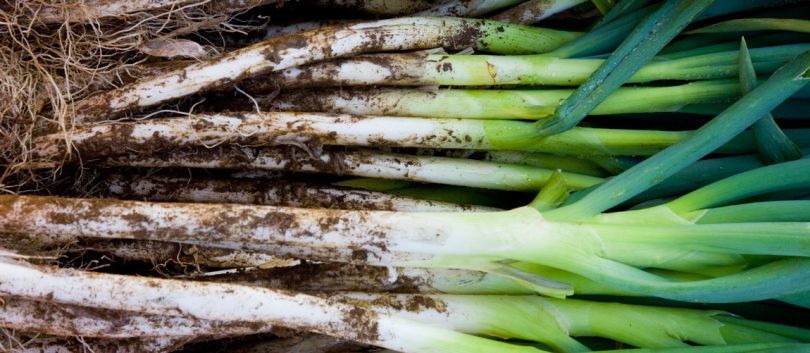Skipping the grocery store and buying direct from a farmer is now returning as a popular way to purchase fruits and vegetables, and even meat, eggs and dairy products. More people are buying food at farmers’ markets and even driving out to buy directly from farms.
The Virginia Department of Agriculture says that farmers’ markets are the primary way for consumers to buy directly from farmers. “We’ve definitely seen an increase and I think it’s safe to call it dramatic. For example, in 2005, we had around 80 farmers’ markets in the state. Today, we have around 240,” says Elaine Lidholm, from the Virginia Department of Agriculture and Consumer Services (VDACS). That’s a 180 percent increase in less than a decade.
But customers are also driving out to the farms to make their purchases. Michael Drewry, of Drewry Farms in Wakefield, Virginia, says that he thinks his farm has seen a 50 percent increase in people buying directly.
“Young parents with small children are deeply concerned about food health and safety. Young educated adults who are rejecting chemical dependent factory farming are coming to our farm asking questions and supporting our mission,” he says.
Health concerns appear to be a significant part of the increased traffic at farms and farm stands. Although research about the specific benefits of organic foods is ongoing, the lower residue of pesticides is an advantage. In response to increased awareness, Drewry now offers strawberries for picking, grown without using pesticides.
“We had a huge increase in people coming to our ‘you pick’ strawberry patch this spring for pesticide-free berries. Especially since strawberries once again made the list of 12 most pesticide-laden fruits,” he says.
Drewry also uses non-genetically modified grain to supplement pasture-raised beef and pork, and says he’s seen an increased interest in people directly purchasing meat, too. A recent United States Department of Agriculture survey showed that while organic food is only about 4 percent of all groceries, more people want to purchase humanely raised meat and poultry.
Additionally, food contamination scares in recent years also encourage people to buy closer to home. But there is a significant price premium on organically grown food, plus the cost of driving to different locations to pick up items.
Despite the obstacles, people continually want to know where their food is coming from, and how it is being grown or raised. Jenn Haynes, from James City County, visits several locations to pick fruit and buy produce.
“I want to know where my food comes from, and I want to have a relationship with the people. Labels are not as good as looking someone in the eye who grew it,” she says.
Some of the farms are out of the way—including New Kent County, Mathews County and Surry County. Haynes enjoys hand-picking the fruit that she uses to make jams, and believes the quality is much better.
“The blueberries are so good, I’ll drive that far,” Haynes says.
It’s not always easy to return to the process of visiting different places for different foods, driving miles out of the way for just one type of item, but the experience may be part of the fun.
the value of the farm experience VDACS has also seen a significant increase in the number of “agritourism” venues such as pick-your-own farms and the autumn festival events at pumpkin patches.
“I believe the greater appeal for pick-your-own, or agritourism venues, is the fun and novelty of gathering their own food and in spending the day on the farm,” Lidholm says.
Many locations have additional fun, such as pony rides, corn mazes, fishing, feeding animals, greenhouses, gift shops and ice cream stands. The experience of a day on the farm may add to the cost of the picked produce, but it’s also part of the unique experience of farm life for guests, particularly children.
“That on-farm experience is becoming more and more attractive each year as fewer people have access to a private farm. Twenty years ago, many families still had a grandparent, uncle or cousin who farmed. Today, only one percent of the population is actively engaged in production agriculture, so the on-farm experience is harder to come by,” says Lidholm.
Drewry cautions people though, that a visit to a farm for a day is not reflective of the life of a farmer. “The romantic idea of county farming is far different from the reality of dealing with hogs, chickens and cattle as well as the struggles to keep mold from the berries without chemicals and the demands of consumers who don’t understand the farm isn’t a grocery store,” he says.
One of the benefits of buying direct from a farmer though, is that you get to see where your food comes from, appreciate the hard work that went into it and support the farmer with your purchase. Plus, it’s delicious!
Updated 7-5-19


